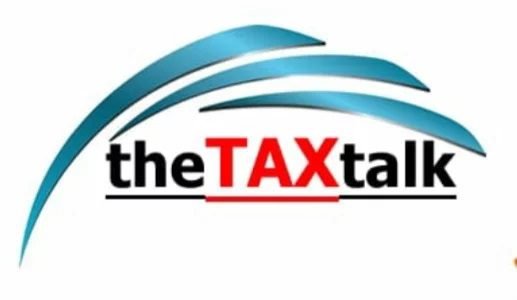![]()
When 26AS Says One Thing and AIS Says Another – Who Do You Trust!
[Query 1]
ITR filing due date extended but deadline to pay final tax without penalty is July 31 or Sept 15 now for FY 2024-25. I have read the following content somewhere –
“Deposit tax without penalty: The Central Board of Direct Taxes (CBDT) has extended the last date to file income tax return from July 31, 2025, to September 15, 2025, for the financial year 2024-25. In the past, CBDT has asked the taxpayers to deposit self-assessment tax by July 31, even though the ITR filing deadline has been extended”. Please confirm the position. [mohankhare548@gmail.com]
Opinion:
Ah, the sweet sound of a deadline extension! It’s like a school principal announcing a surprise holiday-pure joy, followed almost immediately by a slight, nagging question: “Wait, do I still have to do my homework?”
The income tax department has extended the due date to file an income tax return for FY 2024-25 (AY 2025-26) from July 31st, 2025 to September 15th, 2025. Extension is for all those taxpayers whose accounts are not required to be audited such as salaried taxpayers, NRIs, and pensioners. When CBDT extends the ITR due date, taxpayers breathe a sigh of relief – and then immediately panic wondering, “But do I still have to pay the tax by July 31?
Typically, the date of filing the income tax return i.e., July 31st in general is also the due date for taxpayers to deposit their Self-Assessment Tax (SAT). It is the amount of tax that a taxpayer is liable to pay after deducting the TDS, TCS and advance tax payments. If a belated ITR is filed (i.e., return filed after the due date) and the SAT is not paid by the due date, then the taxpayer has to pay interest under Section 234A. Think of Self-Assessment Tax like the balance payment on your online shopping – you can’t delay it just because you haven’t left a product review yet.
It may be noted that interest under Section 234A of the Income Tax Act, 1961 is applicable when the ITR is filed after the due date as specified under Section 139(1) and the SAT remains unpaid by the due date.
With the ITR filing due date for FY 2024-25 (AY 2025-26) being extended to 15 September 2025, this revised date will be considered as the “due date” for the purposes of Section 234A. Accordingly, interest will not be levied provided the due amount of tax is paid on or before the extended timeline of 15th September 2025. This position is supported by the CBDT circular No. 2/2015 and also court rulings in CIT v. Prannoy Roy. [Caution: Do not confuse this with advance tax deadlines or other interest sections like 234B/234C. This relief applies only to interest under Section 234A and only because the due date under Section 139(1) has been officially extended].
[Query 2]
Many of us have some doubts while filing the returns themselves.
Before filling, we collect the following documents.
1. Form 16 & 16A
2. Form 26AS
3. AIS
4. TIS
5. Pre-filled data
Although the TDS figures are same in all the above documents (2-4),
We notice some variation in these forms. Even in AIS, figures under B1 and B2 differ. I request you to suggest something regarding which figures in respect to Deposit interest we should take for filing tax return? [gcmaji@gmail.com]
Opinion:
Welcome to the new era of tax filing, where the department gives you so much data, it feels less like help and more like a pop quiz! It’s like asking five different people for directions and getting five slightly different answers. Whether it’s 16/16A, 26AS, AIS, TIS or the pre-filled ITR, all claim to tell you “how much you earned” and “how much TDS was done” – yet, when you compare them, the flavors don’t always match – it’s the same dish, but one cook added more salt
In your case, the TDS figures are consistent but deposit interest differs between these sources. Even AIS has a split – B1 [Information relating to tax deducted or collected at source] whereas B2 [Information relating to specified financial transaction (SFT)] – and these can confuse anyone.
There are often variations between the figures due to duplicate entries or due to timing difference or due to correction in entries till system syncs, etc. AIS says one thing, TIS agrees but in fewer words, and 26AS just sits there saying, ‘Don’t forget me. Pre-filled figures sometimes lag behind the latest AIS update. Further, In AIS you can see both the “amount reported by source” and “amount after taxpayer feedback”; TIS may show only the final accepted figure. Also, AIS may show all the figures whereas TDS Data may just show only the date where TDS has been done. This could be the probable reason for mismatches.
Which figure should you take?
Golden Rule:
Your ITR should be based on actual income earned during the financial year, not the gossip from AIS or 26AS. This golden rule must be followed despite the fact that AIS mentioned as “If there is variation between the TDS/TCS information as displayed in Form 26AS on TRACES portal vis a vis as displayed in AIS on Compliance Portal, the taxpayer may rely on the information displayed on TRACES portal for the purpose of filing of tax return and for other tax compliance purposes”.
Taxpayers should normally follow the following procedure:
Step 1: Peek into your own passbook & other records- it knows the truth better.
Step 2: Cross-check with 26AS to make sure your TDS credit hasn’t wandered off.
Step 3: AIS/TIS disagree? Smile politely and stick to your facts. In AIS, if you find information is not true, mark it as “Information is incorrect / partially correct” and update with actual figures – this avoids future mismatch notices.
In short: Use AIS/TIS/26AS as reference tools, but file your return on the basis of your actual computation. The Department wants accuracy, not blind faith in their pre-filled figures. If your records are clean and your TDS matches, even if interest figures vary slightly, you’re safe. As I often say – when in doubt, trust your own books more than the taxman’s books.
Concluding Remarks:
Filing your ITR today is like asking five people to describe the same cricket match – one swears it was a test, another says it was T20, one talks only about wickets, and someone insists it was a friendly match. Form 16/16A, 26AS, AIS, TIS, and pre-filled data each tell their own “truth.” In the end, your passbook and FD statements are the only umpires whose decision really counts. If your TDS matches and your numbers are clean, you can shut the laptop and sleep like a champion – no tax nightmares, no sudden bouncers from the department.
[Views expressed are the personal view of the author. Readers are advised to seek professional advice before taking any decisions. Readers may forward their feedback & queries at nareshjakhotia@gmail.com. Other articles & response to queries are available at www.theTAXtalk.com]


